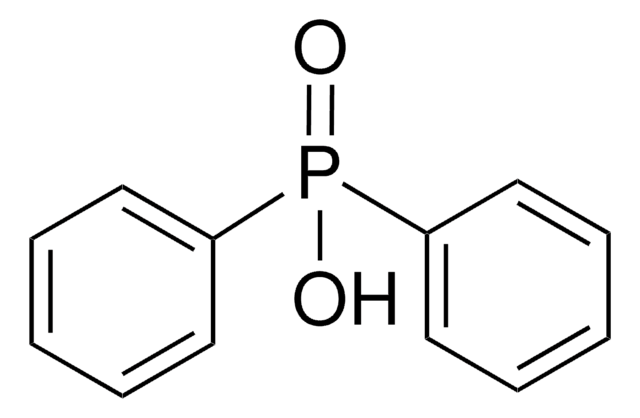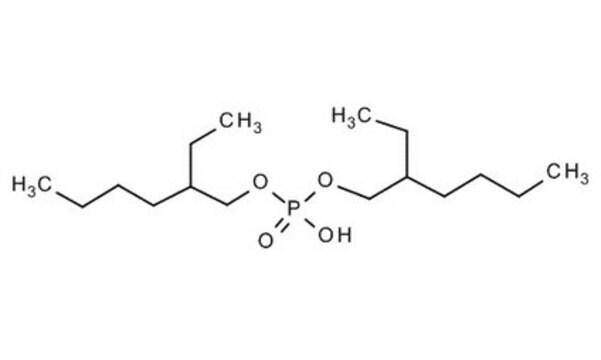おすすめの製品
グレード
technical
品質水準
アッセイ
~85% (T)
形状
liquid
屈折率
n20/D 1.48
密度
0.93 g/mL at 20 °C (lit.)
SMILES記法
CC(CC(C)(C)C)CP(S)(=O)CC(C)CC(C)(C)C
InChI
1S/C16H35OPS/c1-13(9-15(3,4)5)11-18(17,19)12-14(2)10-16(6,7)8/h13-14H,9-12H2,1-8H3,(H,17,19)
InChI Key
KUYLHALFMPOMKK-UHFFFAOYSA-N
詳細
Diisooctylthiophosphinic acid (Bis(2,4,4-trimethylpentyl)thiophosphinic acid) is a hygroscopic liquid. Its physical properties (refractive index and specific gravity) have been reported.
Diisooctylthiophosphinic acid is an application specific reagent.
アプリケーション
Complexing agent for the extraction of transition metals
Diisooctylthiophosphinic acid is suitable for use in the colorimetric determination of airborne lead. It may be used as chelating agent for supercritical fluid extraction (SFE) of metals, for subsequent ICP-MS analyses of mercury, cadmium and lead in sediment.
シグナルワード
Danger
危険有害性情報
危険有害性の分類
Skin Corr. 1B
保管分類コード
8A - Combustible corrosive hazardous materials
WGK
WGK 3
引火点(°F)
204.8 °F - closed cup
引火点(℃)
96 °C - closed cup
個人用保護具 (PPE)
Faceshields, Gloves, Goggles, type ABEK (EN14387) respirator filter
適用法令
試験研究用途を考慮した関連法令を主に挙げております。化学物質以外については、一部の情報のみ提供しています。 製品を安全かつ合法的に使用することは、使用者の義務です。最新情報により修正される場合があります。WEBの反映には時間を要することがあるため、適宜SDSをご参照ください。
消防法
第4類:引火性液体
第三石油類
危険等級III
非水溶性液体
Jan Code
38224-VAR-F:
38224-100ML-F:
38224-500ML-F:
38224-BULK-F:
Ash M and Ash I.
Handbook of solvents., 254-254 (2003)
Raja Norimie Raja Sulaiman et al.
Journal of hazardous materials, 340, 77-84 (2017-07-18)
The discharge of electroplating waste containing nickel ions has led to environmental issues owing to the toxicity problem mainly to the aquatic organisms and humans. Liquid-liquid extraction offers a great potential treatment for nickel removal with several advantages of simple
Supercritical Fluid Extraction of Metals Using Bis (2, 4, 4-trimethyl-pentyl) monothiophosphinic Acid as Chelating Agent for Subsequent ICP-MS Analyses of Mercury, Cadmium and Lead in Sediment.
Roa EC, et al.
E-Journal of Chemistry, 8(3), 1114-1119 (2011)
Pornpimol Kongtip et al.
The Southeast Asian journal of tropical medicine and public health, 41(6), 1500-1511 (2011-02-19)
We developed a method to analyze airborne lead concentrations in the field. It was a modification of the colorimetric method using the reaction between 4(2-pyridylazo)-resorcinol (PAR) and lead with cyanex302 in an acid medium to reduce interfering metals. The lead
ライフサイエンス、有機合成、材料科学、クロマトグラフィー、分析など、あらゆる分野の研究に経験のあるメンバーがおります。.
製品に関するお問い合わせはこちら(テクニカルサービス)








